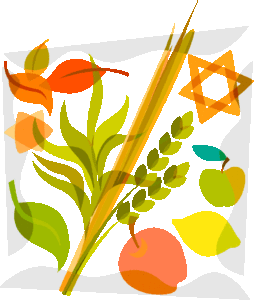The Book of Ruth and Shavu’ot

The Jewish traditions on Shavu’ot include the reading of the scroll of Ruth. This small, four-chapter book is one of the most remarkable jewels in the TaNaKh. It is a love story that is venerated among literature buffs for its sheer elegance. Ruth, a Moabitess, in her loyal dedication to Na’omi (her widowed mother-in-law), after her own husband dies returns with Na’omi to Beit-Lechem where she ultimately marries Bo’az, a wealthy landowner, who is the hero of the story. The book is also treasured among Bible students because it gives us an unparalleled glimpse into the life and customs of ancient Isra’el. The laws concerning gleaning, the redemption of property, and the laws concerning the levirate marriage are all beautifully illustrated by the narrative.
But it may come as a surprise to believers that it is also a key book of prophecy, without which one has little chance of really understanding the book of Revelation. The story illustrates the role of a go’el, the kinsman-redeemer, who returns the land lost to Na’omi by performing the requirements of redemption. He also takes for himself a Gentile bride who is destined to appear in the family tree of David and of Jesus Christ.
The exquisite parallels have been well recognized by many biblical scholars: Na’omi (foreshadowing Isra’el) returning to the land, and Ruth (foreshadowing the Bride of Christ), each established by the act of redemption by the kinsman-redeemer, Bo’az. What is remarkable is how even the subtle details of the scroll of Ruth seem to support this foreshadowing. Ruth learns of the pattern (God’s design) of redemption through Na’omi. The Church learns of God’s redemptive design through Isra’el. An unnamed servant introduces Ruth to Bo’az. The Ruach ha-Kodesh is always modeled in the TaNaKh types as the “unnamed servant.” Jesus told us that the Holy Spirit would never testify of Himself. Na’omi learns of Bo’az through Ruth. Is there a witness burden here for the Church?
And where is Ruth during the threshing floor scene? At Bo’az’s feet! The threshing floor is one of the idioms that can allude to the tribulation. One cannot build doctrine from foreshadowing, but it can be instructive. The list goes on and on. Every time we study this book it seems there are additional “discoveries.”
It is interesting that Ruth can be viewed as prophetic of the Church (to see link click Av – Scene Three: Na’omi’s Wonderful Plan for Ruth’s Life), which was a mystery in the TaNaKh (Ephesians 5:32). And it is interesting that, even among the Jewish community, this book is associated with Shavu’ot. Many assume that the Festival of Shavu’ot was completely fulfilled in Acts 2:15. But surely there’s still more to come.



Leave A Comment